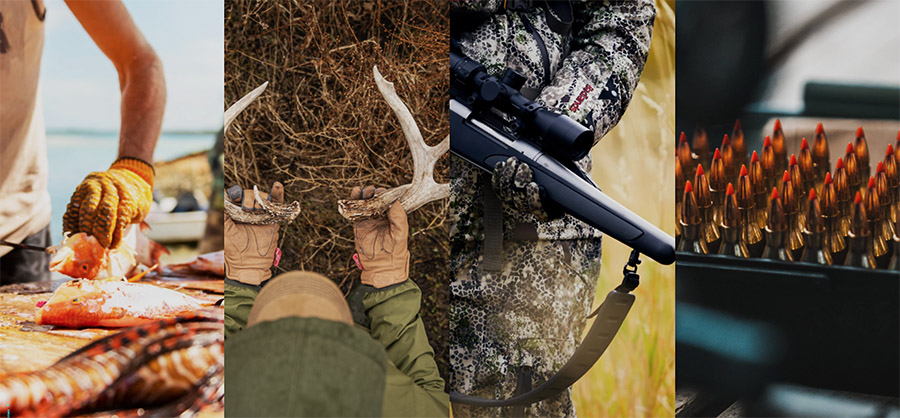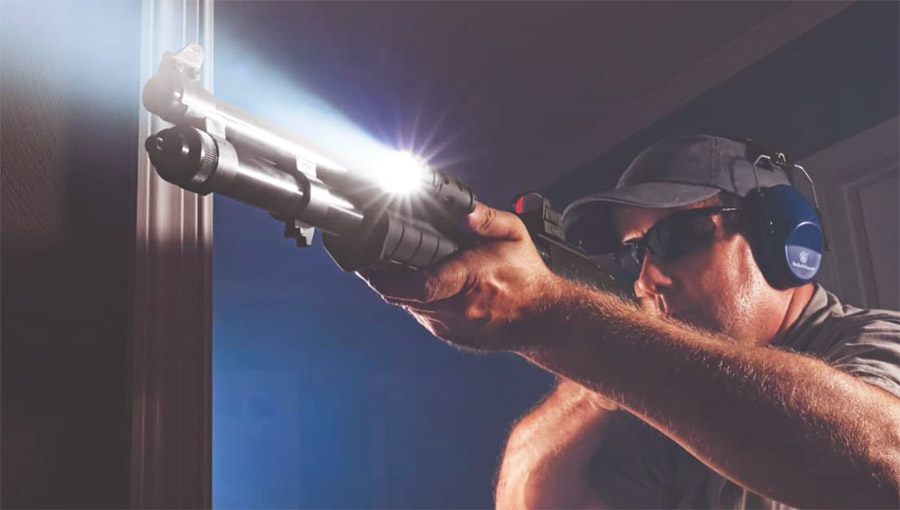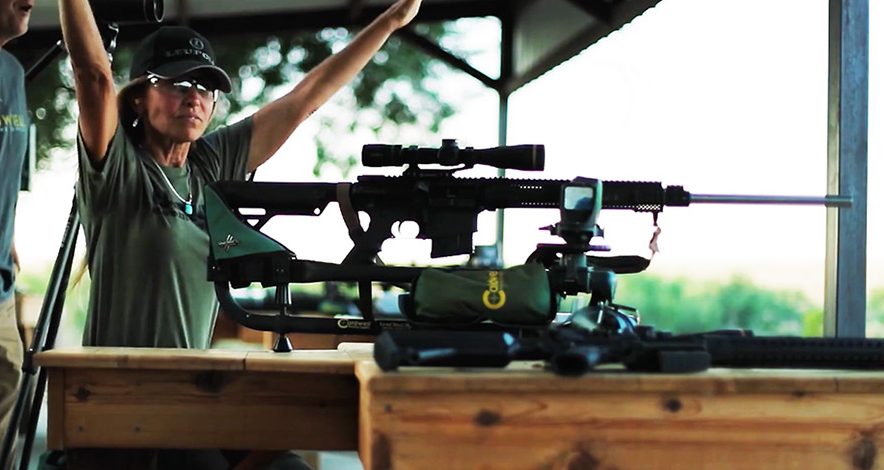American Outdoor Brands hit it out of the park in its fiscal third quarter, nearly doubling its top-line numbers from the prior-year quarter and besting the numbers for its second quarter, which is historically AOUT’s biggest quarter.
Company President and CEO Brian Murphy, a 2016 SGB 40 Under40 Award Honoree, reported on a conference call with analysts that the quarter exceeded its internal expectations for revenues and net income.
“I believe our performance reflects not only the ongoing strength of the outdoor market but, more importantly, the value of our highly authentic brand portfolio, our unique Dock and Unlock strategy, the harvesting of our strong new product pipeline, and the investments we made in our business two to three years ago that are beginning to bear fruit. These elements have long been core to our strategy, and they underlie the great results we’re reporting today,” Murphy offered on the call.
AOUT saw net sales for the fiscal third-quarter increase 91 percent to $82.6 million, compared to $43.3 million in the prior-year third quarter, driven by “favorable consumer trends and a consumer preference for our strong brand portfolio.” Company CFO Andy Fulmer detailed that seven of its 20 brands grew more than 100 percent over the prior-year comp quarter.

“Historically, our second-quarter sales have represented the highest point in our annual seasonality,” said Fulmer. “This year, however, Q3 will likely stand as our highest quarter, aligning with robust POS trends that were occurring at the time, combined with retailer load-ins of inventory on new products from our Crimson Trace and UST brands, new customer additions for Crimson Trace and strong channel inventory replenishment made possible by effective inventory planning.”
Murphy added details on how the company exploits its brand potential through its “Dock & Unlock” process.
“When we purchased Crimson Trace almost five years ago, it had long been a leader in the market for laser sights for self-defense, essentially a red or green laser attached to the frame of a firearm, allowing the user to aim more rapidly and accurately,” Murphy began. “Interestingly, when we plugged the brand into our Dock & Unlock process, we learned that consumers had come to view it as a trusted provider of not only laser sights but aiming solutions more broadly. We thought, where else could Crimson Trace go with this increased permission to play? Our Defender brand lane team went to work, expanding the Crimson Trace offering in 2018 to include red dot sights and a small assortment of rifle scopes, but their work didn’t stop there. Ongoing research hinted to us what we believe consumers wanted most. And in this third quarter, we announced the launch of over 50 optics in our newly established Hardline and Brushline series of rifle scopes. Like the rest of our Crimson Trace products, the new scopes have undergone what we believe to be the most rigorous and hardcore testing in the industry, which is why they’re backed by a lifetime warranty. They have the strength of IP behind a variety of features, and they preview the new design aesthetic that we are incorporating into future Crimson Trace products.”

Sales in the company’s traditional channels grew 68.5 percent to $46.2 million. Net sales in its e-commerce channels were $36.5 million, an increase of 129 percent over the prior-year comp period. Fulmer detailed that e-commerce channels include the company’s direct-to-consumer sales and sales to retail customers that do not traditionally operate a physical brick & mortar store but instead generate most of their sales on their retail websites.
Fiscal third-quarter gross margins were 45.2 percent, a 110-basis point increase over the prior-year third quarter. The favorable impact of product mix and fewer promotional programs were said to be partially offset by higher tariff costs and sales of discounted slower-moving inventory to specific retailers, both of which Fulmer said was expected.
“As a reminder last quarter, we said we would be working to sell $5 million to $6 million of certain slower-moving inventory at a low margin to convert that product to cash,” Fulmer said. “Our efforts have been successful. And in Q3, we sold approximately $3 million of this inventory. In Q4, we expect to complete the sale of the remaining $2 million to $3 million of inventory. We incorporated the impact of those sales into our guidance.”
GAAP EPS was 56 cents per share in the fiscal third quarter, compared with an EPS loss of one cent last year. The company’s non-GAAP EPS was 82 cents in Q3 compared to 13 cents in the year-ago comp quarter.
“Adjusted EBITDA of $15.8 million represents an increase of approximately 360 percent over the prior year, at a margin of 19.1 percent compared to 7.9 percent in the prior-year quarter. This great result was favorably impacted by the absence of promotions required in the current environment, reduced OpEx from travel and trade shows and significant leverage of fixed costs at that net sales level,” Fulmer explained.

American Outdoor Brands ended the quarter with $45.5 million cash-on-hand and no borrowings on its credit line, primarily driven by an operating cash inflow of $12.6 million for the quarter, netted by cash outflows of $1 million for capital expenditures and patent costs. AOUT continues to expect approximately $4 million in total CapEx spending for the current fiscal year, with a portion of that being non-recurring in nature related to the spin-off from its former parent company Smith & Wesson Brands, in August of last year.
Fulmer detailed that the company experienced “some constraints with shipping capacity and port-related delays” with certain inbound products during the quarter, but its team worked with suppliers to “ensure a consistent inflow of inventory.” He said they utilized air freight on occasion when the margin impact was acceptable. He said they held inventory levels flat from Q2 to Q3.
“Starting in Q4, we expect our inventory to increase due to a few factors,” Fulmer reported. “First, like many companies, we see unprecedented port congestion. For instance, the Port of Long Beach reported its busiest February with 43 percent more shipping containers processed than before. To help mitigate transportation risk, we intend to increase safety stock in some of our high-volume SKUs.”
AOUT ended the quarter with no bank debt and the total capacity available on its $50 million credit lines. This facility provides an additional $15 million of availability under certain conditions. Between its revolver capacity and its cash balance, its total available capital at the end of Q3 was over $110 million.
“This access to capital provides us with a menu of options as we identify opportunities for organic and inorganic investments,” Fulmer suggested.
Murphy suggested that it would continue to focus on the future (5-to-10 years out) in making investments it believes will unlock each of its brands’ full potential over that period, regardless of the direction the outdoor market takes in a post-pandemic world.
“Overall, however, it looks as though the floor has been raised for outdoor participation, and we expect a portion of those new entrants to continue recreating and our categories well past the current pandemic. Because of that, we’re very excited to continue engaging with a much larger consumer base than we did before 2020,” Murphy said.
AOUT is one of the few active lifestyle companies offering guidance on future results. The company is now estimating full-year net sales in the range of $268 million to $272 million, which would represent growth of roughly 60 percent to 62 percent year-over-year. With net sales in that range, full-year GAAP EPS would be $1.07 to $1.14 and non-GAAP EPS in the range of $2.08 to $2.15.
“We would also expect adjusted EBITDAS in the range of $43.5 million to $44.5 million, which would represent growth of approximately 254 percent to 262 percent year-over-year,” Fulmer suggested. “At the midpoint, our guidance implies healthy fourth-quarter net sales growth of about 34 percent over the year-ago quarter and second half growth of about 62 percent over the year-ago period. This outlook takes into account current POS trends, which remain favorable but which have come off Q3 levels.”
Photos courtesy American Outdoor Brands
















